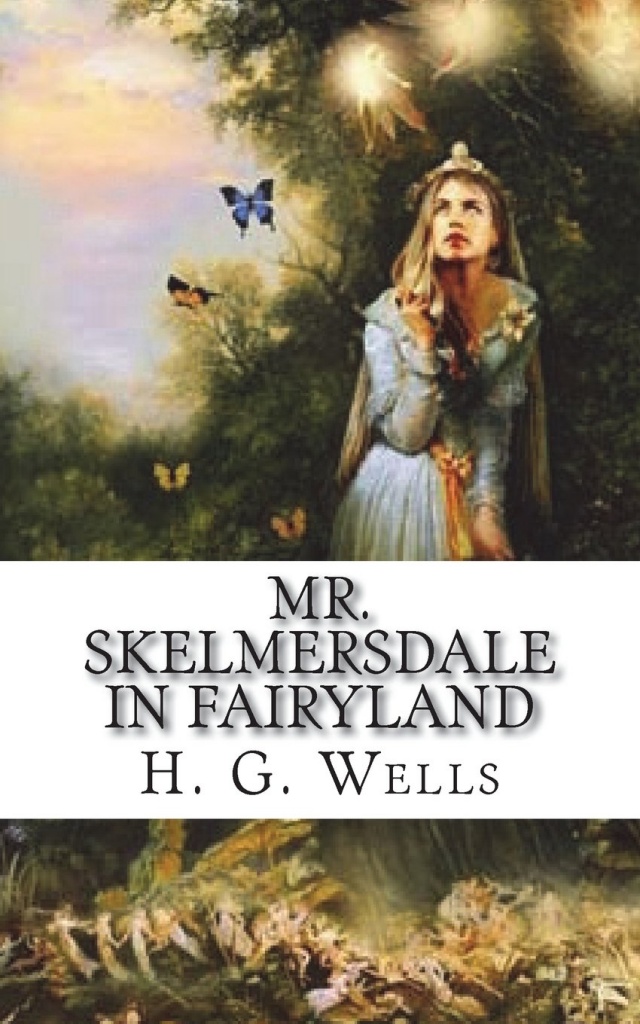“Mr. Skelmersdale in Fairyland” is a short story by the English author H. G. Wells (1866–1946), first published in The Strand MagazineMonthly publication founded by George Newnes, published 1891–1950, credited with introducing the short story to a British audience. in 1901; it was subsequently reprinted in Twelve Stories and a DreamCollection of 13 short stories by H. G. Wells, first published in 1903. (1903). The story concerns a young man who falls asleep one midsummer’s night and wakes to find himself in Fairyland.[1] Although now considered to be one of Wells’s lesser works, it was widely read and highly regarded at the time of its publication.[2]
The story is told as a third-person narrative by an unnamed writer who is visiting the village of Bignor. He learns that an assistant in the local shop – known only as Mr. Skelmersdale – is believed to have visited Fairyland, and although Skelmersdale is at first reluctant to tell his tale, the narrator eventually gains his confidence and hears the story first hand.
On the evening of what may have been midsummer’s night, but was certainly around that time of year, Skelmersdale is wandering alone on Aldington Knoll, a nearby artificial mound, troubled by a row he had had with his fiancé Millie. After sitting down on the grass to consider his situation he falls asleep. When he awakes, the turf seems softer than before, and he can longer see the sky. He is surrounded by smiling elves, who had found him asleep and transported him to Fairyland on the orders of the beautiful Fairy Lady, who tells Skelmersdale that she has fallen in love with him. The Fairy Lady hopes that Skelmersdale will return her love, but he tells her that he is engaged to be married to Millie. He goes on to describe his ambition to get enough capital together to open a little shop, and the Lady tells him that in return for a kiss he shall have whatever he wants.
When the time comes for Skelmersdale to leave Fairyland, the Lady is true to her word; she has his pockets stuffed with fairy gold, kisses him goodbye and walks away. Too late, Skelmersdale realises that he is making a mistake, but the Lady has disappeared. He tries to chase after her, but suddenly finds himself “sprawling upon Aldington Knoll, all lonely under the stars”, his fairy gold turned to ashes; he finds out later that he has been away for three weeks. When he meets Millie again “She was just nothing. I couldn’t make out whatever I ‘ad seen in ‘er ever, or what there could ‘ave been.”
Pining for what might have been, Skelmerdale spends many evenings up on the knoll, shouting the Fairy Lady’s name and calling to be let back into Fairyland, but to no avail. “I’ve thought if I could go to sleep there, there might be something. But I’ve sat up there and laid up there, and I couldn’t – not for thinking and longing. It’s the longing …”.
Commentary
“Mr. Skelmersdale” is centred on a theme to which Wells returned throughout his career, “a man obsessed by a vision of a beautiful and elusive lady and who searches in vain for the promise the vision seems to embody”. On his return from Fairyland, realising that he will never see the Fairy Lady again, Skelmersdale finds the everyday world to be “coarse and flat and uninspiring” by comparison.[3]
During the early 20th century there was a widespread belief in fairies even among such luminaries as Sir Arthur Conan Doyle, as evidenced by the reception given to photographs of the Cottingley FairiesThe Cottingley Fairies appear in a series of five photographs taken by Elsie Wright (1901–1988) and Frances Griffiths (1907–1986), two cousins who lived in Cottingley, near Bradford in England. . Wells described stories such as “Mr. Skelmersdale”, in which wanderers find themselves adrift in strange worlds, as exploration fantasies, and in this story as in his earlier The Time Machine (1895) he offers “a fairy tale for the scientific age”.[2]
See also
- H. G. Wells bibliographyList of publications written by H. G. Wells during the more than fifty years of his literary career.
External links
- Full text of “Mr. Skelmersdale in Fairyland” at Project Gutenberg

